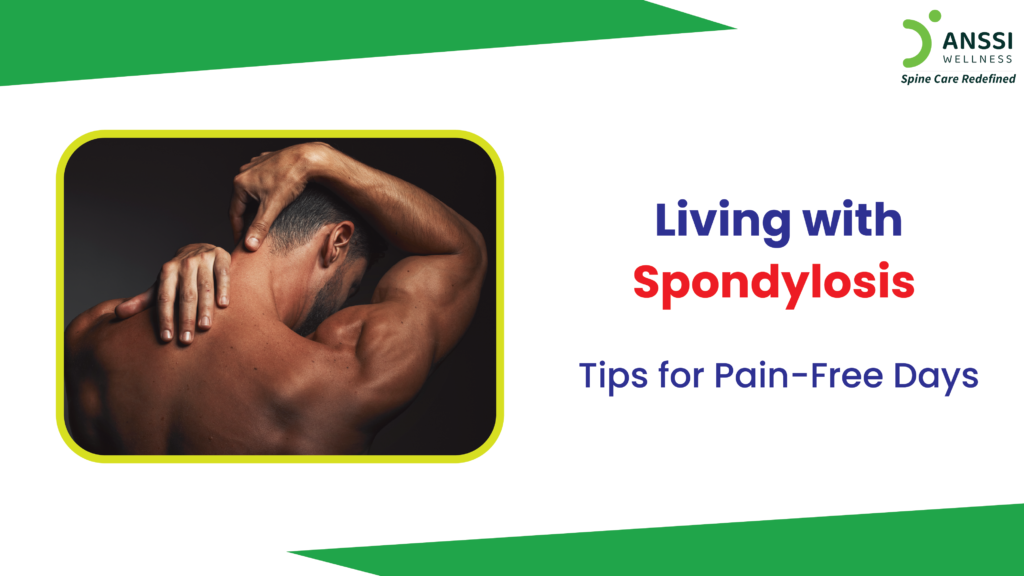Spondylosis is a common degenerative condition that affects the spine, leading to pain, stiffness, and reduced mobility. While it is often associated with ageing, lifestyle factors also play a significant role in its progression.
If you are suffering from spondylosis, you can still manage it effectively to lead a pain-free and active life. Let’s explore practical strategies for coping with spondylosis, including lifestyle modifications, exercises, and advanced non-surgical treatments like spinal decompression treatment.
Understanding Spondylosis and Its Impact
Spondylosis refers to age-related wear and tear of the spine, which can affect the cervical (neck), thoracic (mid-back), or lumbar (lower back) regions. It results in the degeneration of spinal discs, joint inflammation, and the formation of bone spurs, leading to stiffness and pain.
Common symptoms include:
- Chronic back or neck pain
- Limited range of motion
- Numbness or tingling in the limbs
- Muscle weakness
- Headaches (in cervical spondylosis)
Although spondylosis is progressive, adopting the right approach can significantly reduce your discomfort and improve daily function.
Daily Strategies for Managing Spondylosis
Here are a few important tips to keep your spondylosis in check.
1. Maintain a Good Posture
Poor posture puts extra stress on the spine, worsening pain and stiffness.
To prevent this:
- Whether standing or sitting, maintain a straight back.
- Use an ergonomic chair and maintain spinal alignment while working.
- Avoid looking down at screens for prolonged periods.
2. Stay Active with Gentle Exercises
Regular movement prevents stiffness and strengthens the muscles supporting the spine.
Beneficial exercises include:
- Stretching: Improves flexibility and relieves tightness.
- Yoga: Enhances spinal health and reduces tension.
- Walking: A low-impact way to maintain mobility.
- Core Strengthening: Supports the lower back and improves posture.
3. Use Heat and Cold Therapy
Applying heat helps relax muscles and improve blood flow, while cold packs reduce inflammation and numb pain.
- Spend 15 to 20 minutes using a heated cloth or heating pad.
- Apply an ice pack to swollen areas for short durations.
4. Adopt a Spine-Friendly Sleeping Position
Morning soreness and stiffness can be avoided by sleeping with proper posture.
- Use a firm mattress for better spinal support.
- If you sleep on your back, keep a pillow beneath your knees.
- If you are a side sleeper, place a pillow between the knees.
5. Maintain a Healthy Weight
Excess weight puts additional pressure on the spine, worsening pain. Eating a balanced diet and staying active can help manage weight and support spinal health.
6. Reduce Stress and Stay Relaxed
Chronic stress can increase muscle tension and aggravate pain.
Try relaxation techniques like:
- Deep breathing exercises
- Meditation and mindfulness
- Engaging in hobbies and enjoyable activities
Advanced Non-Surgical Treatment: Spinal Decompression Treatment
For individuals seeking long-term relief without surgery, non-surgical spinal decompression treatment is a highly effective option. It works by gently stretching the spine, creating negative pressure within the discs.
This process:
- Relieves pressure on spinal nerves
- Enhances nutrient flow for disc healing
- Reduces pain and improves mobility
Spinal decompression treatment is safe and painless, and has helped thousands of patients find relief from chronic back and neck pain caused by spondylosis.
About ANSSI:
ANSSI Wellness focuses on improving the quality of life for patients suffering from spinal issues, aiming to provide relief where other conventional treatments have failed. Through advanced non-surgical spinal decompression treatment, ANSSI is committed to helping patients avoid surgery and recover in a safe, effective, and compassionate environment.
Connect with ANSSI Wellness on LinkedIn, Instagram, and Facebook for expert guidance.



